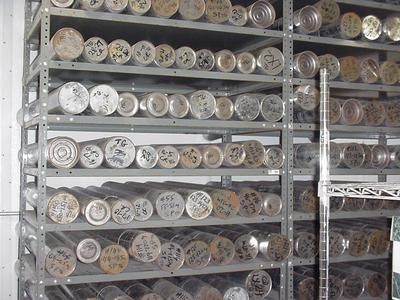
|
7 August, 2002Cold Regions Research Lab Brrr!!! Entering the cold room at the Cold Regions Research Lab (CRRL) in Hanover, New Hampshire is an invigorating reminder of what lies ahead for me and all the other new TEA's. The sign on the door says -20 °F, about the same temperature that I will find in Antarctica but I know the unpredictable weather will make it a lot colder. This room stores ice core samples, including some of the first ever drilled in Greenland. It is one of many rooms, some the size of warehouses, kept cold for the Army Corp of Engineers to perform experiments on new machinery that will be placed in cold regions around the world. Our guide is Marie Darlen, a pleasant and humorous public relations person who brings us through this Military facility. She walks us down a myriad of hallways that show the successful results of experiments that the staff of 300 have completed over the years. On a table sits samples of concrete mixed with antifreeze that can extend its life, a poster on the wall displays quick deicing methods for helicopters and another poster shows restoration methods for wetlands contaminated with the white phosphor of spent army munitions. Through another hallway we find ourselves standing in front of three large refrigerated rooms. One contains a tank of water that when chilled can simulate sea ice. It is used for modeling the stresses incurred by the resurfacing of our Navy's submarines. Another tank called the refrigerated Flume simulates cold water environments for aquatic life. Today the room is quiet and the bottom of the tank is covered in sand, but when the room is chilled it can be an extremely noisy, cold and inhospitable room for the staff to work in. The third room contains a simulated river lock design, where engineers are trying to figure out more efficient ways of navigating ships through ice-blocked locks. It is all quite amazing to see how important cold regions research is to both the military and the public. It is no wonder that the National Science Foundation and the Office of Polar Programs has made the TEA program a cornerstone of their education initiative. Question of the Day: The lowest temperature ever recorded on Earth's surface was -89.6ºC at Russia?s Vostok station (near the South's magnetic Pole) on July 21, 1983. There are places colder than that, where?
Contact the TEA in the field at . If you cannot connect through your browser, copy the TEA's e-mail address in the "To:" line of your favorite e-mail package. |




